For many, the appearance of fine lines under the eyes marks one of the earliest signs of aging. This delicate area, where the skin is thinner and less elastic, is often among the first to show the impact of time, lifestyle, and environmental exposure. Understanding how to get rid of fine lines under eyes requires a multifaceted approach that includes both evidence-based dermatological interventions and holistic remedies rooted in natural skin health. For individuals seeking long-term results, combining professional treatments with consistent at-home care is essential. This guide offers a deep dive into the best treatment for under eye wrinkles, from medically approved procedures to the best product for eye wrinkles and home remedies that support long-term skin vitality.
You may also like: How to Choose Skin Care for Fine Lines: Evidence-Based Tips for Healthier, Younger-Looking Skin
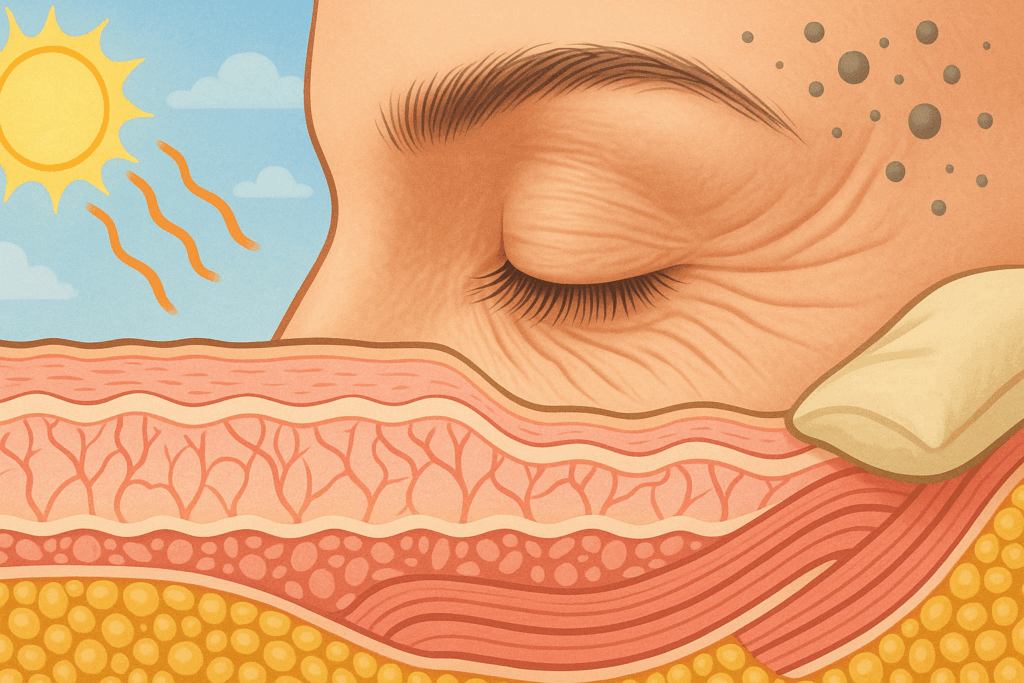
Understanding Why Fine Lines Develop Under the Eyes
Fine lines under the eyes are caused by a combination of intrinsic aging and extrinsic stressors. Intrinsically, the skin loses collagen and elastin as we age, leading to thinner, less resilient tissue that creases more easily. This is particularly evident in the periorbital region, where the skin is not only thinner but also more frequently subjected to muscle contractions from blinking, squinting, and smiling. Over time, these repetitive movements, coupled with a natural decline in hydration and firmness, result in visible creases that deepen into permanent lines. While genetics play a significant role in determining how early and how prominently these changes appear, external factors such as UV radiation, pollution, and smoking can accelerate the process.
Sleep habits and facial positioning also contribute to under eye creases. People who sleep face down or on their side often experience increased wrinkling on the side of the face that is pressed against the pillow. Chronic under-eye puffiness or fluid retention may stretch the skin, exacerbating the appearance of fine lines. Additionally, oxidative stress from poor diet, alcohol consumption, or lack of antioxidants in the skincare routine further damages the skin’s structural proteins. Understanding these root causes allows us to identify the most effective under eye wrinkle treatment options, both clinical and at-home.
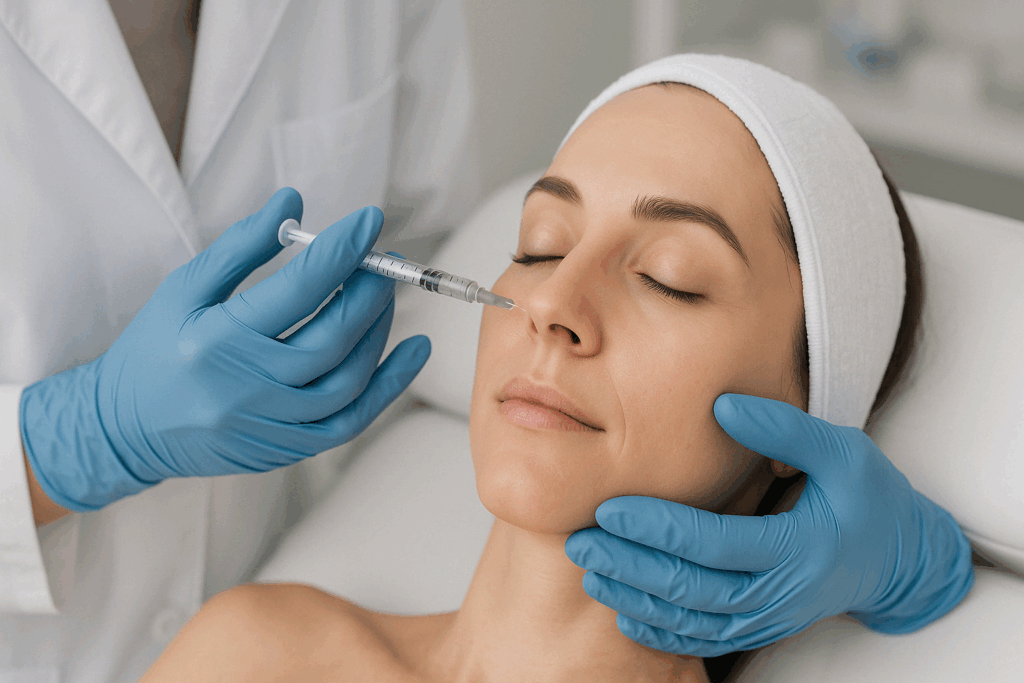
Medically Approved Treatments for Under Eye Wrinkles
Among the most scientifically validated approaches to treating fine lines is the use of injectable neurotoxins, such as botulinum toxin (commonly known as Botox). When administered by a licensed dermatologist, Botox relaxes the orbicularis oculi muscle, minimizing the contraction-induced wrinkling that causes crow’s feet and under eye creases. It is considered by many professionals to be the best treatment for under eye wrinkles in patients with dynamic lines caused by muscle movement. While results typically last three to four months, regular treatments can prevent lines from deepening over time.
For deeper, more static wrinkles, dermal fillers offer another layer of intervention. Products containing hyaluronic acid, such as Restylane or Juvederm, can be carefully injected into the tear trough or periorbital hollow to plump and smooth the skin. These fillers not only reduce the appearance of existing lines but also improve light reflection under the eyes, reducing the shadowing that contributes to a tired appearance. However, precise technique is critical, as overfilling can cause puffiness or a bluish tint known as the Tyndall effect.
Laser resurfacing treatments also rank high among effective options for how to reduce lines under eyes. Fractional CO2 lasers and non-ablative resurfacing devices stimulate collagen production by creating controlled micro-damage in the skin. Over time, this results in firmer, smoother tissue. Patients with significant sun damage or textural irregularities often experience remarkable improvement after a series of laser sessions. For those seeking less downtime, microneedling with platelet-rich plasma (PRP) has emerged as a promising under eye wrinkle natural treatment that harnesses the body’s own healing response.
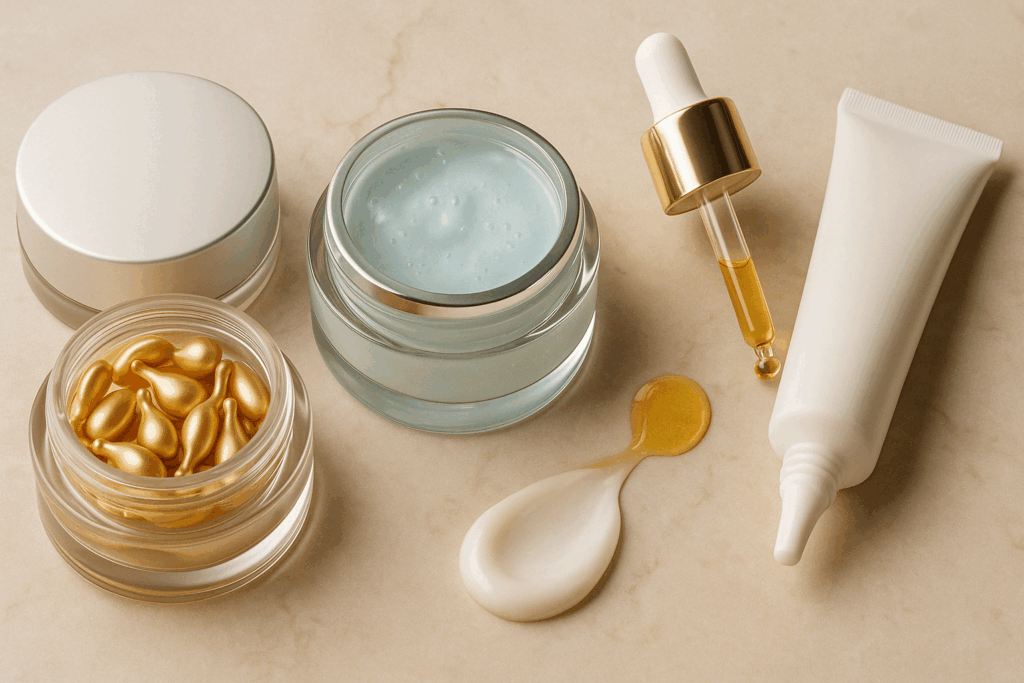
Topical Products: Choosing the Best for Under Eye Wrinkles
Not all skincare products are created equal when it comes to treating under eye lines. The best product for eye wrinkles contains clinically supported ingredients that target the key mechanisms of aging: collagen degradation, inflammation, oxidative stress, and dehydration. Retinoids, particularly prescription-strength tretinoin, remain a cornerstone of topical wrinkle therapy. These compounds increase cellular turnover, stimulate collagen synthesis, and improve skin texture over time. However, because the under-eye area is especially sensitive, many patients opt for gentler retinol formulations designed for this region.
Peptides and growth factors have also gained popularity for their ability to support extracellular matrix regeneration. Products formulated with matrixyl, epidermal growth factor (EGF), or copper peptides have been shown to reduce wrinkle depth and improve elasticity. Caffeine-infused eye creams offer temporary benefits by constricting blood vessels and reducing puffiness, which can lessen the appearance of fine lines. Still, long-term change requires active ingredients capable of reversing structural decline.
Moisturizers containing hyaluronic acid, ceramides, and niacinamide are critical for supporting the skin barrier. Hydration plumps the skin and reduces the visibility of fine lines under eyes, while ceramides strengthen the lipid layer that retains moisture. Niacinamide, a form of vitamin B3, not only calms inflammation but also promotes even tone and improved texture. When choosing the best for under eye wrinkles, it is essential to prioritize formulations that combine these ingredients with minimal irritation potential.
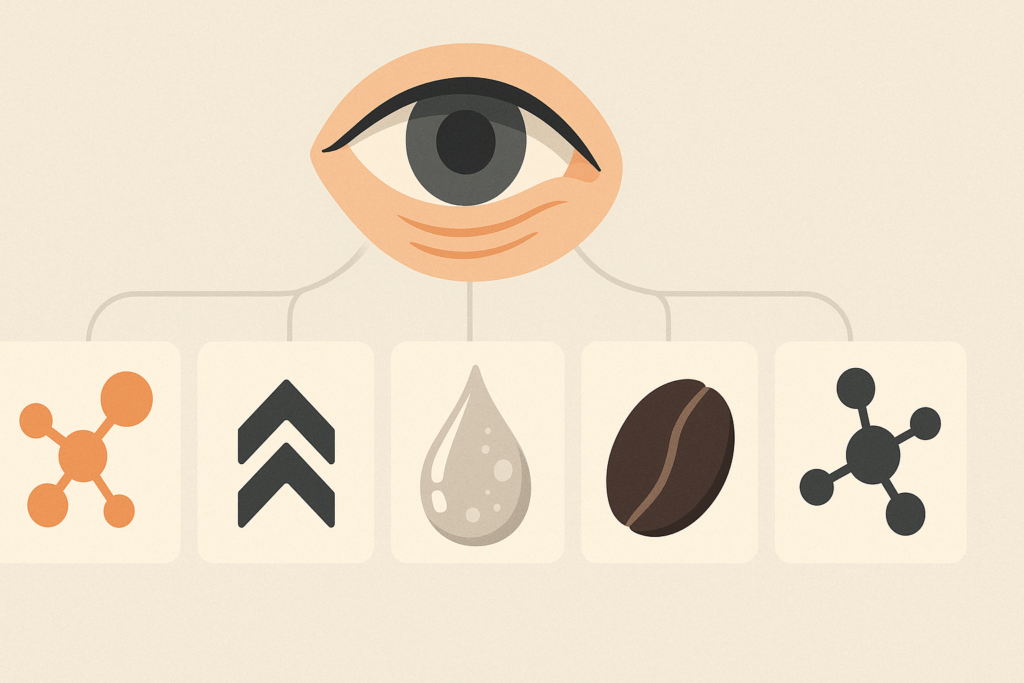
Lifestyle Habits That Support Long-Term Skin Health
While medical procedures and topical treatments are powerful tools, their benefits are significantly enhanced when supported by healthy lifestyle practices. Sleep quality, for instance, plays a pivotal role in skin regeneration. During deep sleep stages, the body releases growth hormones that repair damaged tissue. Chronic sleep deprivation, conversely, disrupts this process and contributes to oxidative stress, ultimately accelerating wrinkle formation. Sleeping on one’s back and using a silk pillowcase can reduce mechanical stress on the under-eye skin.
Nutrition also affects the skin’s resilience and healing capacity. A diet rich in antioxidants—including vitamins C and E, selenium, and polyphenols—helps neutralize free radicals that damage collagen and elastin. Omega-3 fatty acids, found in fatty fish and flaxseed, support the skin’s lipid barrier and reduce inflammation. Conversely, diets high in refined sugars and processed foods can trigger glycation, a process that stiffens collagen fibers and exacerbates the appearance of fine lines.
Hydration is another cornerstone of wrinkle prevention. Dehydrated skin lacks elasticity and appears more wrinkled, especially under the eyes. Drinking enough water, minimizing caffeine and alcohol, and using a humidifier in dry environments can all help maintain optimal hydration levels. When combined with proper skincare, these lifestyle choices create the ideal foundation for under eye wrinkle treatment to succeed.
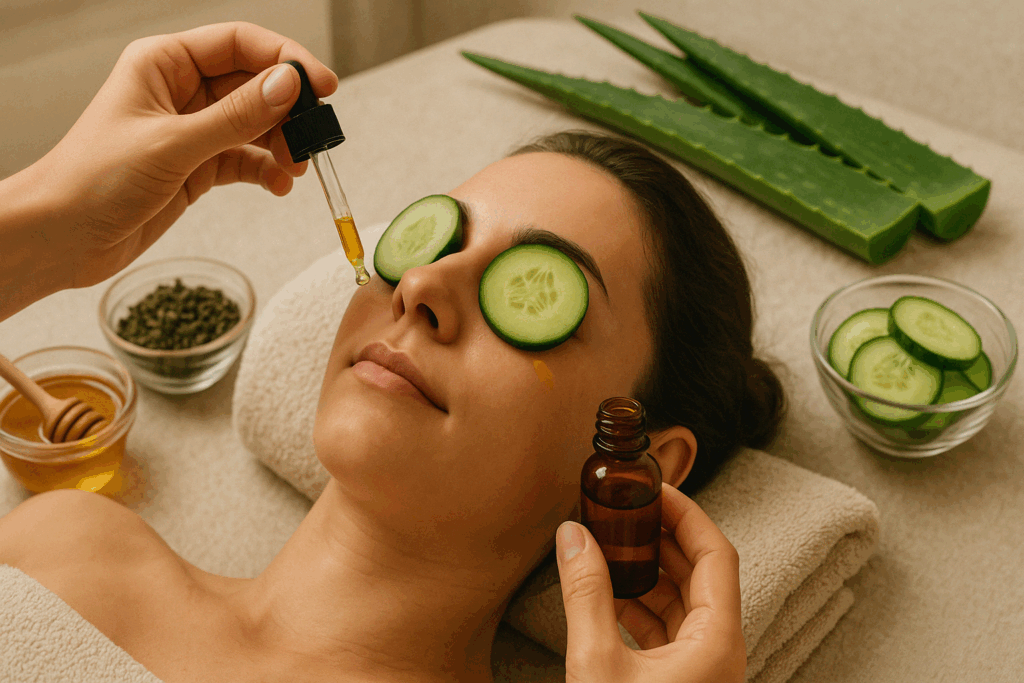
Natural Remedies and At-Home Treatments That Work
For those seeking a natural treatment for wrinkles around eyes, several home-based approaches offer promising results without the need for medical intervention. Cold compresses and chilled green tea bags applied to the eyes can reduce inflammation and constrict blood vessels, offering immediate relief from puffiness and contributing to smoother skin texture. Green tea also contains epigallocatechin gallate (EGCG), a potent antioxidant that helps protect the skin from environmental stressors.
Gentle massage with nourishing oils such as rosehip seed oil or argan oil promotes circulation and lymphatic drainage, which can reduce fluid retention and brighten the under-eye area. These oils are also rich in essential fatty acids and vitamin A, supporting skin regeneration and minimizing the look of under eye crease. Used consistently, such natural methods may not offer instant transformation but can gradually support firmer, more hydrated skin over time.
Homemade masks made from natural ingredients like aloe vera, honey, and cucumber can also be incorporated into a skincare regimen. Aloe vera soothes irritation and supports collagen production, while raw honey acts as a humectant and antioxidant. Cucumber, known for its cooling effect, helps reduce swelling and provides hydration. For those exploring how to eliminate fine lines under eyes without chemicals, these remedies offer a gentle and affordable alternative.
Integrating Natural Remedies with Clinical Care
The most effective under eye wrinkle treatment plan often combines clinical procedures with consistent at-home care. After undergoing laser resurfacing or injectables, dermatologists typically recommend a maintenance routine involving antioxidant serums, retinol creams, and hydrating eye products. When used in conjunction with natural treatments like cold compresses or botanical oils, these regimens support sustained results and minimize the need for frequent re-treatment.
Patients often wonder how to remove wrinkles under the eyes naturally while still pursuing the best cure for eye wrinkles. The answer lies in balance: respecting the skin’s natural physiology while strategically enhancing its capacity for renewal. A gentle cleansing routine, sun protection, and regular exfoliation with non-abrasive acids such as lactic or mandelic acid can also help maintain results achieved through professional care. Avoiding smoking and managing stress levels further supports this process, as both are known to compromise skin function and accelerate aging.
Debunking Common Myths About Eye Wrinkles
In the pursuit of how to reduce wrinkles under eyes, consumers are often bombarded with misinformation. One common myth is that only expensive products can deliver results. In reality, effectiveness hinges on ingredient quality and formulation science, not price. Drugstore options that include proven actives such as retinol, niacinamide, or peptides can be just as effective as luxury brands when used consistently.
Another misconception is that moisturizing alone can erase wrinkles. While hydration is essential, it cannot substitute for treatments that rebuild collagen or modulate muscle activity. Similarly, products that claim to “lift” the skin instantly often rely on film-forming agents that provide a temporary tightening effect without addressing underlying causes. Understanding how to repair wrinkles under eyes requires skepticism and a willingness to explore evidence-based solutions.
Lastly, some believe that under eye wrinkles are inevitable and irreversible. While aging is a natural process, modern dermatology has demonstrated that skin can be rejuvenated well into older age. With the right blend of clinical treatments, the best remedy for eye wrinkles may not be a single miracle cure but a comprehensive, personalized routine that respects the skin’s biology.
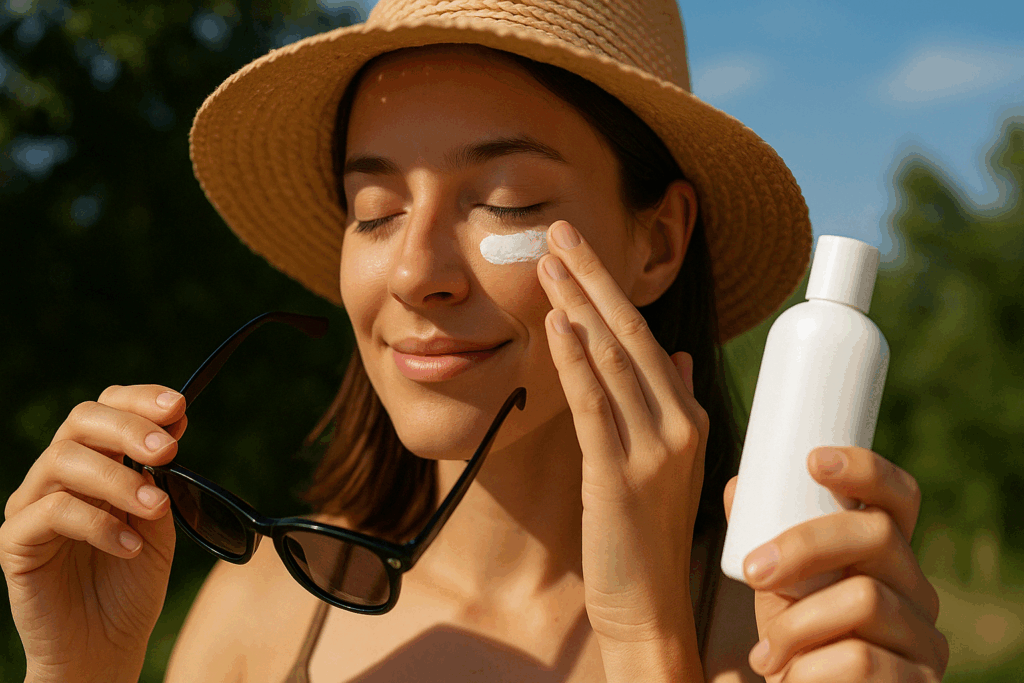
The Role of Prevention in Minimizing Future Wrinkles
Preventative skincare is just as important as corrective measures in maintaining youthful-looking eyes. Daily use of sunscreen is perhaps the most critical habit to adopt. Ultraviolet radiation is the leading extrinsic cause of skin aging, breaking down collagen and triggering hyperpigmentation. Using a broad-spectrum SPF 30 or higher around the eyes—and reapplying throughout the day—provides vital protection. Many modern eye creams now include SPF to simplify this step.
Wearing sunglasses that block UVA and UVB rays not only protects the skin but also reduces squinting, a frequent contributor to dynamic wrinkles. Similarly, anti-blue light skincare is gaining attention for its potential to mitigate oxidative damage from screens, although research in this area is still emerging. Regardless, minimizing digital eye strain through regular screen breaks and blinking exercises can reduce stress in the periorbital muscles.
Beginning a proactive regimen early—even in one’s twenties—can dramatically delay the onset of fine lines. Incorporating antioxidants, mild exfoliants, and gentle hydration sets the stage for long-term skin health. For individuals wondering how to remove fine lines under eyes before they deepen, prevention through lifestyle and consistent skincare is an invaluable strategy.
Frequently Asked Questions: Fine Lines and Wrinkles Under the Eyes
1. Can sleeping habits influence how to get rid of wrinkles under eyes or reduce their appearance over time?
Absolutely. Sleep plays a surprisingly critical role in skin regeneration, especially in delicate areas like under the eyes. People who consistently sleep on their side or stomach often develop under eye creases due to mechanical pressure and fluid retention. Adjusting your sleep position to lying on your back and using silk or satin pillowcases can minimize skin friction and prevent compression wrinkles. These subtle changes support efforts on how to remove wrinkles under the eyes naturally while complementing the best product for eye wrinkles used in your nightly skincare routine.
2. Are there specific vitamins that can help reduce under eye wrinkles more effectively than topical treatments alone?
Yes, certain vitamins support skin health from the inside out and may enhance the effects of your under eye wrinkle treatment. Vitamin C is known for stimulating collagen production and acting as a powerful antioxidant, helping to cure under eye wrinkles by minimizing oxidative stress. Vitamin A, often found in the form of retinol or retinoids, is crucial for cellular renewal, and B vitamins—particularly B3 (niacinamide)—promote even skin tone and barrier function. These internal nutrients, combined with topical applications, help reduce creases under eyes and may even accelerate visible improvements. When used in synergy, they complement the best treatment for under eye wrinkles and contribute to more sustained results.
3. How do environmental factors affect the long-term success of under eye wrinkle natural treatment strategies?
Environmental stressors such as pollution, UV radiation, and even blue light from screens can significantly influence how to treat under eye wrinkles and how to reduce wrinkles around eyes over time. These external factors generate free radicals that break down collagen and elastin, leading to faster skin aging. While natural treatment for wrinkles around eyes may offer antioxidant protection through ingredients like green tea or vitamin E, it’s equally important to minimize exposure to these stressors. Wearing UV-blocking sunglasses, applying mineral sunscreens, and using screen filters can help preserve results from both home remedies for wrinkles around eyes and professional treatments. Managing your daily environment is a vital, often overlooked element of any effective under eye wrinkle treatment.
4. Can facial expressions or daily activities affect how to get rid of lines under your eyes?
Yes, repetitive facial movements, especially squinting and frowning, contribute significantly to the development of fine lines under eyes. Over time, these dynamic expressions cause micro-tears in the dermis, which deepen into wrinkles if not addressed. Using corrective lenses to avoid squinting and practicing facial awareness during screen time can ease the stress placed on periorbital muscles. Combining this behavioral mindfulness with the best remedy for eye wrinkles enhances your efforts to eliminate these lines. Understanding this connection adds an extra layer of insight for those curious about how to rid of wrinkles around eyes more effectively.
5. Is lymphatic drainage effective as a home remedy for wrinkles around eyes or under eye puffiness?
Lymphatic drainage massage is gaining attention as a holistic under eye wrinkles home remedy. This technique improves circulation, reduces fluid buildup, and helps remove metabolic waste that can accumulate under the eyes. Although it doesn’t directly eliminate deep wrinkles, it supports skin elasticity and reduces puffiness, making fine lines under eyes appear less prominent. When performed consistently with botanical oils such as jojoba or rosehip, it complements both natural treatment for wrinkles around eyes and topical creams. It’s a gentle, non-invasive method for those seeking how to reduce creases under eyes without medical procedures.
6. What is the role of hormonal changes in the formation of under eye lines and wrinkles?
Hormonal shifts, particularly during menopause, have a profound effect on skin thickness, moisture retention, and collagen synthesis. A drop in estrogen levels leads to thinner, drier skin and accelerates the breakdown of connective tissue, exacerbating under eye crease formation. This hormonal backdrop can make it more difficult to find a best cure for eye wrinkles that works without additional hormonal support. Women experiencing these changes may benefit from consulting a dermatologist or endocrinologist to personalize their under eye wrinkle treatment. Hormone-aware skin strategies are increasingly integrated into how to repair wrinkles under eyes as we better understand the aging process.
7. Can stress management play a role in how to reduce wrinkles under eyes long-term?
Chronic stress elevates cortisol levels, which impairs the skin’s repair mechanisms and contributes to inflammation and collagen loss. This internal inflammation accelerates the formation of wrinkle eyes, especially in fragile zones like under the eyes. Techniques such as mindfulness, yoga, and even regular breathing exercises reduce systemic stress and improve circulation, indirectly supporting under eye wrinkle natural treatment plans. Incorporating stress management techniques alongside the best product for eye wrinkles can significantly improve skin resilience. When the goal is how to eliminate fine lines under eyes, psychological wellness cannot be overlooked.
8. Are there new technologies in aesthetic dermatology that could redefine the best procedure for under eye wrinkles?
Yes, innovations in energy-based devices and regenerative medicine are changing the landscape of under eye wrinkle treatment. Radiofrequency microneedling, for instance, combines dermal stimulation with controlled heating to remodel collagen more precisely. Similarly, exosome therapy, which uses stem cell-derived vesicles, is being explored for its ability to rejuvenate thin skin without inflammation. These approaches may soon rival or even surpass traditional laser treatments as the best procedure for under eye wrinkles. For those asking how to remove fine lines under eyes with minimal downtime, these emerging technologies offer promising, science-backed alternatives.
9. How can you differentiate between dehydration lines and true under eye wrinkles?
Dehydration lines are superficial and tend to disappear once the skin is rehydrated, either through topical humectants or increased water intake. True wrinkles, on the other hand, are structural changes within the dermis and persist even after moisturizing. One simple test is to apply a hyaluronic acid serum under the eyes: if the lines fade within minutes, they are likely caused by dehydration. However, if the lines remain, you may require a more comprehensive under eye wrinkle treatment. Understanding this difference can help you choose the best treatment for under eye wrinkles and avoid wasting time on ineffective solutions.
10. Can combining eastern skincare practices with western dermatology optimize how to remove wrinkles below eyes?
Absolutely. Eastern practices such as gua sha, jade rolling, and herbal compresses focus on circulation and holistic balance, which can enhance the effects of western treatments like retinoids or peptide serums. These methods support lymphatic flow and soothe inflammation, making them ideal additions to a complete under eye wrinkles home remedy strategy. By blending ancient techniques with modern dermatology, patients can tailor a hybrid approach to how to get rid of fine lines under eyes that aligns with both tradition and science. This fusion of practices also makes the best for under eye wrinkles more accessible across different cultural preferences and skin sensitivities.
Conclusion: Crafting an Effective Strategy to Reduce Under Eye Wrinkles
Learning how to get rid of fine lines under eyes is not about chasing a one-size-fits-all solution. Instead, it involves understanding the complex interplay of aging, lifestyle, and skin biology, then applying a personalized blend of clinically supported interventions and natural care. Whether you are exploring the best procedure for under eye wrinkles or seeking an under eye wrinkles home remedy that aligns with a more holistic philosophy, the key lies in consistency, patience, and informed decision-making. When you combine medical-grade treatments with nourishing habits, your skin can reflect vitality at every age. From the best product for eye wrinkles to strategies on how to reduce creases under eyes without invasive methods, this integrated approach offers a path not just to beauty but to well-being.
Ultimately, the best cure for eye wrinkles is not just about erasing lines but restoring confidence, enhancing skin health, and honoring the stories that time tells on our faces. In this way, wrinkle eyes become not just a cosmetic concern, but a doorway to deeper self-care, mindful living, and radiant resilience.
Was this article helpful? Don’t let it stop with you. Share it right now with someone who needs to see it—whether it’s a friend, a colleague, or your whole network. And if staying ahead on this topic matters to you, subscribe to this publication for the most up-to-date information. You’ll get the latest insights delivered straight to you—no searching, no missing out.
Further Reading:
Home Remedies for Under Eye Wrinkles that Work
How to Prevent Fine Lines Under Your Eyes
Under eye wrinkles: Causes, prevention, and treatment
Disclaimer
The information contained in this article is provided for general informational purposes only and is not intended to serve as medical, legal, or professional advice. While Health11News strives to present accurate, up-to-date, and reliable content, no warranty or guarantee, expressed or implied, is made regarding the completeness, accuracy, or adequacy of the information provided. Readers are strongly advised to seek the guidance of a qualified healthcare provider or other relevant professionals before acting on any information contained in this article. Health11News, its authors, editors, and contributors expressly disclaim any liability for any damages, losses, or consequences arising directly or indirectly from the use, interpretation, or reliance on any information presented herein. The views and opinions expressed in this article are those of the author(s) and do not necessarily reflect the official policies or positions of Health11News.